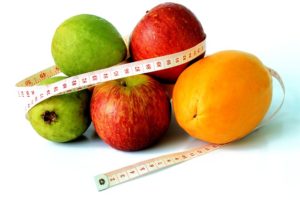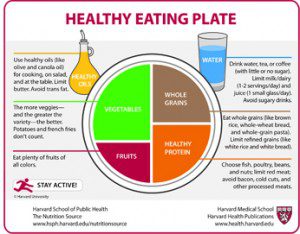The problem with the pyramid, though, has been a complicated one. Too many business interests originally influenced the construction of the pyramid, and emphasis was less about healthy eating and more about promoting a certain type of food.
Today the Healthy Eating Plate replaces the food pyramid structure for several reasons. First, the research conducted by the Harvard School of Public Health was far more substantive than anything the government relied on. Second, a number of flaws were contained within the pyramid format that didn’t account for actual science and nutrition. To truly understand the Harvard Healthy Eating Plate, we need first to understand the underlying concept.
Modern Day Diets
Walk into any food market, and you are bound to find just about anything you need. From packaged rice to seasonings, from candy to juice, and everything in between. The underlying problem with most of these foods is that to keep them on the shelf longer (and to be packaged and shipped to the stores from distribution centers), several processes need to be followed to preserve the food.
We are no longer getting fresh products straight from the farm and, as a result, are not getting the proper nutrition. Coupled with the simple fact that our daily lives are more face-paced affairs, we barely pay attention to what we’re consuming.
The Harvard Healthy Eating Plate Picture is Worth a Thousand Words.
The food pyramid was an ingenious creation. It was much more effective in highlighting what people were missing in their daily diets and what they needed to consume regularly to remain healthy, fight common colds, and have strong bones and muscles and an overall healthy body lifestyle.
Looking at an image was much easier to do than reading a list of possible food choices.
The Food Pyramid Still Exists
It’s important to note that the pyramid still exists, as Harvard created a new healthy eating pyramid.
Yet, it’s the Harvard Healthy Eating Plate that this article is concerned with.
The Average Meal
When you sit down to a meal, what do you tend to look at? For most of us, it’s the plate in front of us. Whether it’s a round plate or a square one, we’re not looking at a pyramid. It makes the most sense to build a structure around what we see when we sit down at the dinner table. The Healthy Eating Plate builds the proper meal, rather than informing you about what you should consume during a regular day.
The Harvard Healthy Eating Plate is Based on the Average Dinner.
If you live in a society that places more emphasis on lunch, then it’s the main meal of the day for you.
To break down the plate in detail, we consider what it contains.

1. Fruits and Vegetables. Half of your plate of food should contain fruits and vegetables. These should be colorful vegetables, and the more varied they are, the better it is for you. Each vegetable contains different proteins, vitamins, and minerals that are good for positive health.
2. Whole Grains. One-quarter of the plate should be reserved for whole grains. Rice is one of the most common forms of whole grains, but unprocessed bread is another option.
3. Sources of Protein. Fish or poultry, beans, and nuts make up the final quarter of the plate.
4. Oils. When cooking with oils or using them for salads, make sure that you use healthy oils, such as olive or canola.
5. Drinks. You should drink a glass of water with your meal, but if you choose coffee, tea, or another beverage, use little or no sugar and limit your daily intake of milk (to two servings) or juice (to one small serving) per day.
Once you become more familiar with the new Harvard Healthy Eating Plate, you’ll begin to realize how simple it is to construct a healthy meal and begin to live a healthier, more energetic life.

